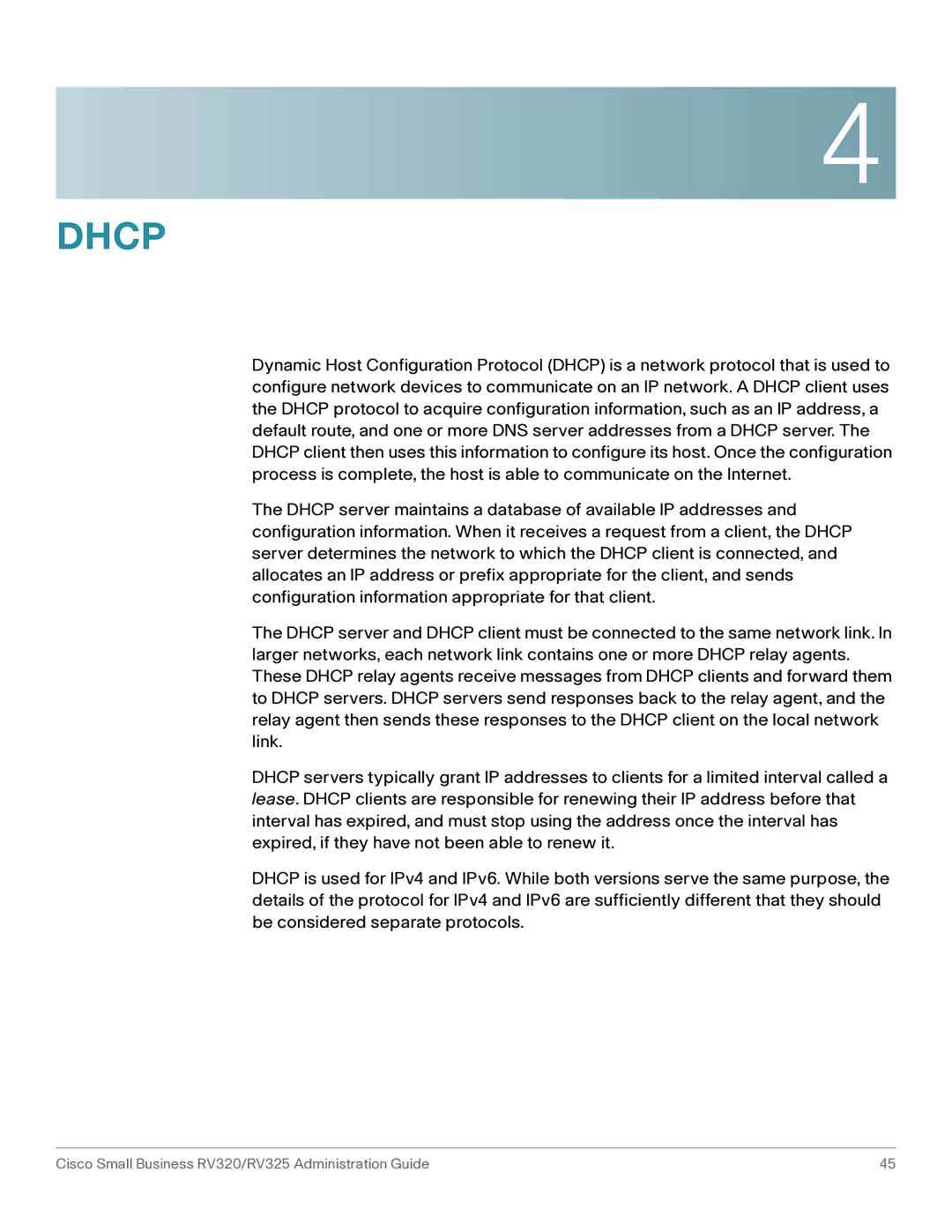
4
DHCP
Dynamic Host Configuration Protocol (DHCP) is a network protocol that is used to configure network devices to communicate on an IP network. A DHCP client uses the DHCP protocol to acquire configuration information, such as an IP address, a default route, and one or more DNS server addresses from a DHCP server. The DHCP client then uses this information to configure its host. Once the configuration process is complete, the host is able to communicate on the Internet.
The DHCP server maintains a database of available IP addresses and configuration information. When it receives a request from a client, the DHCP server determines the network to which the DHCP client is connected, and allocates an IP address or prefix appropriate for the client, and sends configuration information appropriate for that client.
The DHCP server and DHCP client must be connected to the same network link. In larger networks, each network link contains one or more DHCP relay agents. These DHCP relay agents receive messages from DHCP clients and forward them to DHCP servers. DHCP servers send responses back to the relay agent, and the relay agent then sends these responses to the DHCP client on the local network link.
DHCP servers typically grant IP addresses to clients for a limited interval called a lease. DHCP clients are responsible for renewing their IP address before that interval has expired, and must stop using the address once the interval has expired, if they have not been able to renew it.
DHCP is used for IPv4 and IPv6. While both versions serve the same purpose, the details of the protocol for IPv4 and IPv6 are sufficiently different that they should be considered separate protocols.
Cisco Small Business RV320/RV325 Administration Guide | 45 |
